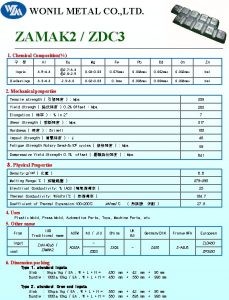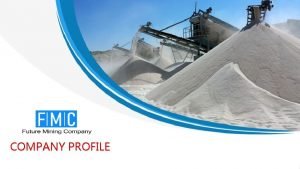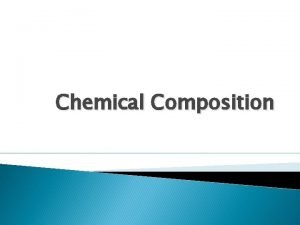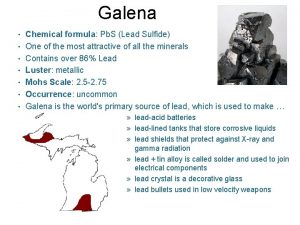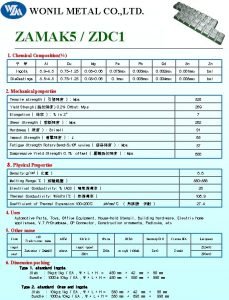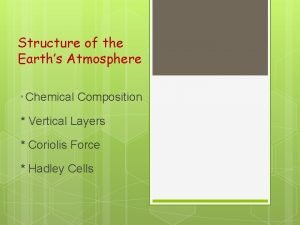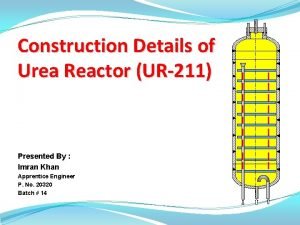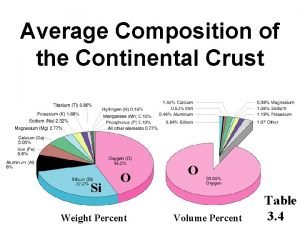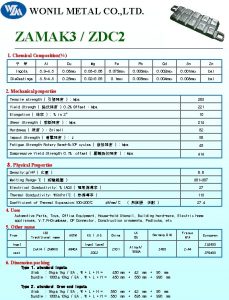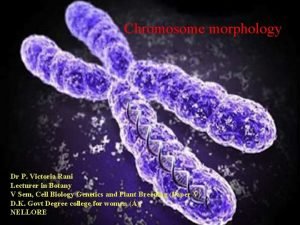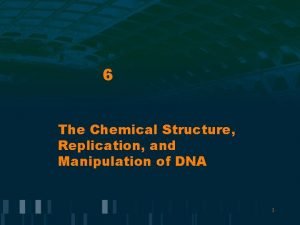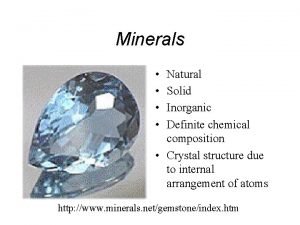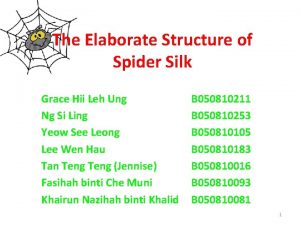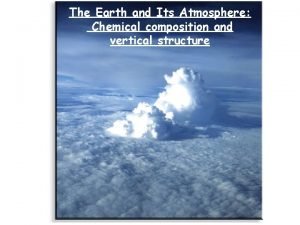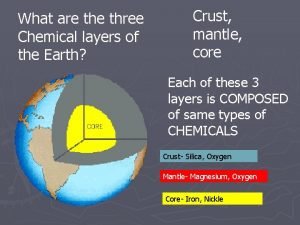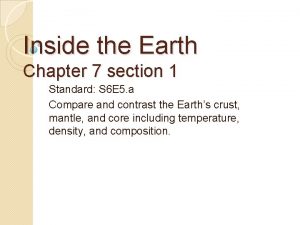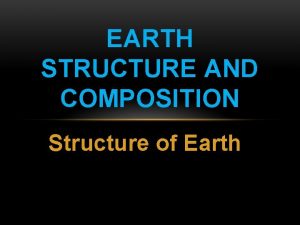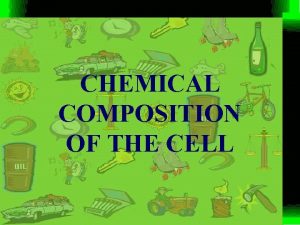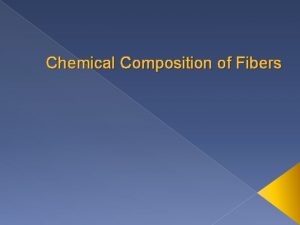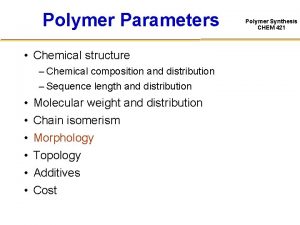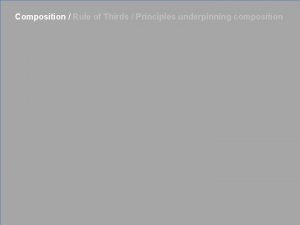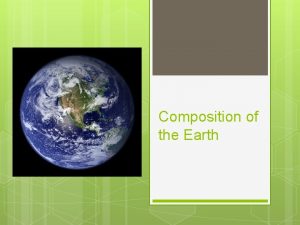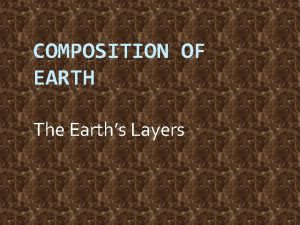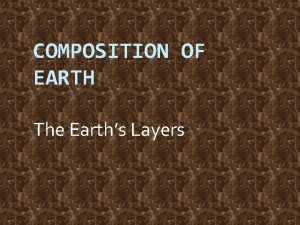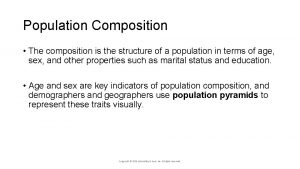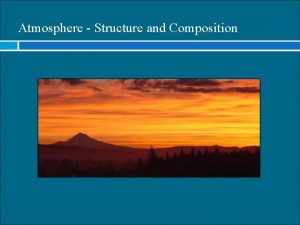STRUCTURE OF THE EARTH Chemical Composition Earth is
























- Slides: 24

STRUCTURE OF THE EARTH Chemical Composition Earth is divided into 3 layers: crust, mantle, core Based on compounds that make up each layer Less dense elements & compounds - crust & mantle More dense elements & compounds - core

THE CRUST 2 Types – Continental & Oceanic Less than 1% of Earth’s mass & volume Both share common elements such as: O, Si, Al Oceanic crust has 2 x as much Fe, Ca, Mg

Oceanic crust is thinner AND denser than continental crust. Continental ~2. 7 g/cm 3 (made of granite) Oceanic ~ 2. 9 g/cm 3 (made of basalt)

ELEMENT TYPES GENERAL DISTRIBUTION BY VOLUME (EARTH)

ELEMENT TYPES DISTRIBUTION WITHIN EARTH’S CRUST ONLY

CRUST. WHAT ARE THEIR NAMES? COMPARE THEIR DENSITIES? WHAT ARE THEY MADE OF? (TOP 4)

THE MANTLE Located between the crust and the core Most of Earth’s mass & volume is located in the mantle (67% & 83% respectively) Only physical observations of mantle are when mantle rock is uplifted to the surface (land or ocean floor)

THE CORE Extends from below the mantle to the center of the Earth Made of mostly Fe with some Si & Ni Approx. 33% of Earth’s mass & 16% volume

PHYSICAL STRUCTURE OF EARTH– 5 LAYERS Lithosphere means “rock” made up of 2 parts 1. 2. Crust Rigid upper part of the mantle Divided into pieces called tectonic plates Approx 0 -100 km Approx 1. 57% volume

Tectonic plates – a block of lithosphere that consists of the crust and the rigid, uppermost part of the mantle. Lithosphere- Contains the crust, rigid upper part of the mantle & tectonic plates that seem to fit like a jigsaw puzzle pieces.

Asthenosphere means “weak” Solid rock that flows very slowly Upper part of mantle Plastic layer of the mantle -“malleable” soft – bendable Pieces of the lithosphere move on top of the asthenosphere Approx 100 -700 km Approx 9. 42% volume

Mesosphere Magma means “middle” layer Strong, upper part of the mantle Between asthenosphere and core Approx 700 -2, 885 km Approx – 34. 30% volume

MANTLE/ASTHENOSPHERE/MESOSPH ERE CONVECTION Convection currents from the mantle/mesosphere turn clockwise or counter clockwise This energy moves the asthenosphere As the asthenosphere moves, blocks of lithosphere also move, bring tectonic plates along for the ride

CHARLES HAPGOOD CRUST DISPLACEMENT THEORY 1950’s Theory states that lithosphere is not separate pieces that slowly move independently of each other and the rest of the Earth, but move as one piece. Supported by Einstein Supported by age of Antarctic ice Supported by discovery of flash frozen animals (wolley mammoth) https: //www. bibliotecapleyades. net/ciencia_earth changes 33. htm

Core – 2 parts Outer Core Liquid iron layer of the core Approx 2, 885 -5, 155 km Approx – 35. 64% volume Inner Core Solid iron layer of the core Approx 5, 155 -6, 371 km Approx 19. 09% volume

Magnetic The Field combination of a liquid iron (mostly) outer core which is moving around a solid iron inner core produces Earth’s magnetic field.

EARTH’S CHEMICAL & PHYSICAL COMPOSITION

THE EARTH’S CRUST, Lithosphere LITHOSPHERE, AND Asthenosphere ASTHENOSPHERE Mesosphere Crust Mantle Lithosphere Asthenosphere Mesosphere

DO NOW: DISCUSS WITH A PARTNER & RECORD ANSWERS ON YOUR PPT NOTES SHEET 1. What layer of physical structure contains all of the tectonic plates? 2. What layers of physical structure make up the mantle? 3. What layers of composition make up the lithosphere?

Differences in Tectonic Plates Some plates have: 1. an entire continent and oceanic crust 2. only oceanic crust 3. partial continental & oceanic crust

Some plates have: 1. an entire continent and oceanic crust 2. only oceanic crust 3. partial continental & oceanic crust

Tectonic Plates float on top of the asthenosphere in a similar way that ice floats on the surface of water. Plates cover surface of asthenosphere, touch one another, and move around. Lithosphere displaces the asthenosphere Thick tectonic plates (made of cont. crust) displace more than thin plates (made of oceanic crust)

Mapping the Earth’s Interior Seismic waves – vibrations caused by earthquakes. travel at different speeds speed depends on density and composition of material faster through solids faster through denser rock slower through liquids

Seismographs - measure the times at which different seismic waves arrive and record the differences in their speeds Scientists use the measurements to calculate the density and thickness of each physical layer of the Earth.
 Zamak 5 chemical composition
Zamak 5 chemical composition Mining company profile
Mining company profile Chemical composition
Chemical composition Essential chemistry for biology
Essential chemistry for biology Galena chemical composition
Galena chemical composition Chemical composition of fungi
Chemical composition of fungi Properties of saliva
Properties of saliva Zamak 5 composition
Zamak 5 composition Mesosphere chemical composition
Mesosphere chemical composition Chemical composition of solid waste
Chemical composition of solid waste Urea reactor design
Urea reactor design Chemical composition of continental crust
Chemical composition of continental crust Zdc v2
Zdc v2 Chemical composition in a cell
Chemical composition in a cell P
P Chemical composition of gene
Chemical composition of gene Filament bending
Filament bending Definite chemical composition
Definite chemical composition Yielded
Yielded Structure of atmosphere diagram
Structure of atmosphere diagram Mesosphere earth layer composition
Mesosphere earth layer composition Chemical and physical layers of the earth
Chemical and physical layers of the earth Chapter 7 section 1 inside the earth answer key
Chapter 7 section 1 inside the earth answer key Chemical reactions section 2 classifying chemical reactions
Chemical reactions section 2 classifying chemical reactions Chapter 7 review chemical formulas and chemical compounds
Chapter 7 review chemical formulas and chemical compounds
